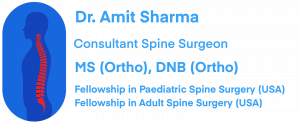Physiotherapy
Back pain is one of the leading cause of disability worldwide with 60-80% of people experiencing back pain once during the course of their life. If you complain about back pain lasting more than a couple of weeks, your doctor is likely to refer you to a Physiotherapist. And while back pain may seem severe, causes of back pain are often repairable by good physiotherapy.
What happens when you first see a Physiotherapist?
During your first appointment, the physiotherapist will try to determine what kind of pain they are dealing with. Is it acute (0-6weeks), subacute (6-12weeks) or chronic (>12weeks). This will be followed by a detailed physical examination which includes understanding functioning of your back and special tests and neurological assessment. Based on this information, the treatment will be tailored to your specific cause of your back pain.
Presentation of Back pain
Back pain manifests itself in many ways. Localized pain is felt usually in the lower back (above your tailbone) and buttocks. Radiating pain occurs when along with back-pain, pain also travels down the leg or foot. Radiating pain can also occur in the form of numbness and/or tingling and is usually the result of nerves being irritated. Sometimes, symptoms can occur in the leg, without actually being felt in the back. This is called referred pain. More often, back pain results from lifestyle factors, such as prolonged sitting, being in poor physical condition, and bending and lifting improperly.
Early diagnosis and treatment is the key to decreasing your pain and resuming full activities. Treatment that focuses on exercise, mechanics and posture improves symptoms quickly and reduces the chance for a recurrence. The good news is if you consult a physiotherapist immediately after experiencing and complaining of back pain, treatment is extremely effective. The longer the symptoms persist, the harder it becomes to treat. Staying active is important, and prolonged bed rest should be avoided.
Back Pain Relief & Protection
Alleviating your back pain is the main reason that you seek treatment for it. Physiotherapist will use an array of treatment tools to reduce your pain and inflammation. These include ice or heat, electrical modalities (TENS, IFT, dry needling, de-loading taping techniques, instrument assisted soft tissue mobilization), which along with medications help in reducing pain. Back braces provide compression and support for the lower back, thereby reducing pressure on your lower back discs, ligaments, muscles and spine for them to start healing. Patients could wear a back brace for a few days but should not wear it more than a few weeks as longer durations of brace use can lead to muscles getting accustomed to the brace. This could lead the muscles to loose strength and can lead to additional injuries.
RESTORATION OF FUNCTION
Based on your examination, the best treatment options for your low back pain could be:
1) Manual therapy (hands-on mobilization of the joints in your back): Physiotherapists skilled in manual therapy will use precise hands-on techniques to relieve pain, stiffness, and improve movement of the joints and muscles of your spine.
2) Movement exercises: Lower back pain exercises restore motion and decrease radiating or referred pain. If the problem stems from irritation or pressure on a nerve from a disk bulge or spinal stenosis, pain often travels down the leg and there may be numbness, tingling and weakness. Leg pain may be worse than back pain. With spinal stenosis, an opening through which nerves travel narrows, can impinge on nerves which is often treated with exercises called neural tissue mobilization. If pain is worse with bending forward, movements that involve bending backward may help relieve pressure on the nerve. There’s a progression to these exercises, which are called McKenzie exercises. If pain is less with bending forward, which is common with spinal stenosis, the second motion involves opening movements also called Shacklock mechanical openers and forward bending exercises to open up the area of pressure on the spine.
3) Progressive strengthening exercises: This group of exercises focus on core stability and endurance. People with back pain often have a difficult time engaging the correct muscles. When deep spinal muscles weaken, other surrounding muscles become overly tight as they try to stabilize the spine, but that’s not their role, and pain and tightness will often develop in them. The goal of stabilization exercises is to re-train the deep muscles. A physiotherapist will teach you how to use the correct abdominal and spinal muscles (core muscles) before going through a series of motions to stabilize the spine.
With the correct lower back pain exercises and specific treatment guided by your physiotherapist, back pain relief is very much achievable in vast majority of the patients. Most severe lower back pain sufferers also usually recover within 4 to 6 weeks. However, this time can vary greatly from patient to patient and is dependent on the nature of your back injury, the treatment plan that you develop with your physiotherapist, and how compliant you are with your treatment and exercises.

